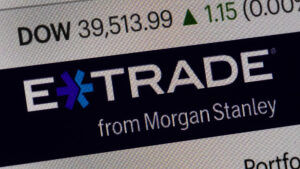Markets
Attention turned to central bank speeches again in absence of key eco data in the US and EMU. Chicago Fed Goolsbee had the biggest market impact. He said that markets may have put the cart before the horse on cuts. He’s seen surprising progress on services inflation, but want to see more progress on housing inflation. It triggered a new sell-off in US Treasuries with the front end of the curve underperforming. US yields add 4.7 bps (2-yr) to 0.5 bps (30-yr). German Bunds shadow the move to a lesser extent with yields rising up to 2.5 bps at the front end. The dollar fails to profit with EUR/USD going nowhere at 1.0875. Sterling slightly underperforms following the release of very weak December retail sales. EUR/GBP moves from 0.8560 towards 0.8590.’
Focus shifts to first major central bank gatherings of the year next week, excluding the National Bank of Poland’s status quo on January 9. Chronologically, the Bank of Japan has a first go on Tuesday. Rumours suggested downward revisions to the near term growth outlook and the near/medium term inflation outlook. Together with uncertainty related to external events like the severe earthquake, it suggests that the BoJ is in no hurry to implement a real policy U-turn (ending negative policy rates). The Japanese yen is the biggest victim of this continued soft stance in combination with new weakness in core bonds. It prompted first verbal interventions by Finance Minister Suzuki this morning as USD/JPY approaches the key 150-handle. We fear that an even weaker Japanese currency is the preferred market mechanism to push the BoJ with the back against the wall. The Bank of Canada convenes on Wednesday. December Canadian inflation data unexpectedly showed new momentum in underlying price trends, suggesting the BoC won’t be able to flag a rapid start to policy rates cuts. They could nevertheless turn somewhat more neutral as they still vowed to raise the policy rate (5%) further if needed. On Thursday, the duo of Norges Bank and ECB decide on monetary policy. The Norwegian disinflation process went faster than expected at the end of 2023. In combination with a slightly stronger Norwegian krone, this could prompt the Norges Bank to pull its December 2024 first rate cut call somewhat forward in time. Last but not least, there’s the ECB. ECB President Lagarde pushed back against aggressive market expectations at the World Economic Forum in Davos. She suggested a first rate cut only in Summer. Media concluded that European central bankers are preparing a June rate cut, with the jury still out whether June 6 can already be labelled “Summer”. If not, our view, we’re talking about a July rate cut at the very earliest with markets still convinced about an April move. We expect Lagarde to hold this week’s line which should underpin this year’s trend (higher) on interest rate markets.
News & Views
In an interview with the website 300Gospodraka.pl MPC member Ludwik Kotecki of the National Bank of Poland indicated that the NBP won’t cut interest rates according the path that markets currently discount. He advocates that interest rates will have to stay longer at current level. He admits that Polish inflation might drop below 3% in March, but it may rebound to 6%-7% in H2, even as forecasting inflation is difficult due to uncertainty over food and energy prices. Kotecki sees the September and October rate cuts as a mistake, but the NBP can’t reverse them as this would be inefficient and incomprehensible. At the same time he also rejects the option of the NBP selling bonds from its portfolio as it could disrupt the treasury market and weaken the zloty. It would also make it more difficult for the government to finance its budget expenditures.
According to data published by the Swedish Riksbank, the central bank is gradually moving towards the targets of the FX reserves hedging program its started end September last year. In the first week of the year, they sold $70mn and €350mn. It completed $6.67bn of the intended $8bn and €1.56bn of the targeted sales of €2bn. The Riksbank planned to complete the sales over a six month horizon. The krone since mid-September strengthened from the EUR/SEK 11.90 area to a top of EUR/SEK 11 in the last week of the year. Since then it again weakened to currently trade near EUR/SEK 11.40. The price pattern suggests that the price moves in the krone are mainly determined by global financial conditions (fall and rise in core bond yields) rather than by the flows related to the Riksbank hedging.









